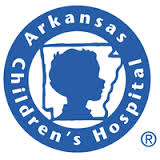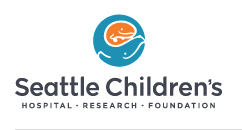Study of Weekly ALTU-238 Compared With Daily Nutropin AQ in Prepubertal Children With Growth Hormone Deficiency
| Status: | Recruiting |
|---|---|
| Conditions: | Endocrine |
| Therapuetic Areas: | Endocrinology |
| Healthy: | No |
| Age Range: | 3 - 13 |
| Updated: | 4/2/2016 |
| Start Date: | March 2009 |
| Contact: | Dr. Kenneth Attie, Medical Monitor |
| Email: | kattie@altus.com |
| Phone: | 781-373-6481 |
A Twelve Month, Phase II, Randomized, Open-Label, Multi-Center, Dose-Ranging Study of Weekly ALTU-238 (Somatropin) as Compared With Daily Nutropin AQ (Somatropin) in Prepubertal Children With Growth Hormone Deficiency
The purpose of the study is to evaluate the safety and effectiveness of ALTU-238 in the
treatment of children with growth hormone deficiency who have not yet reached puberty who
lack the normal ability to make growth hormone themselves. This study will also test if
ALTU-238 works as a weekly treatment.
treatment of children with growth hormone deficiency who have not yet reached puberty who
lack the normal ability to make growth hormone themselves. This study will also test if
ALTU-238 works as a weekly treatment.
Inclusion Criteria:
1. Assent of subject, if applicable, and written informed consent of parent or legal
guardian
2. Diagnosis of GHD as defined by a maximum stimulated GH < 7 ng/mL (μg/L) on two
stimulation tests (using any two distinct agents from the following list: arginine,
L-dopa, clonidine, insulin, or glucagon); if two documented historical tests are not
available,test(s) must be performed during Screening period
3. Available results from one or more historical CT or MRI scans of the head obtained at
or following the diagnosis of GHD
4. Chronologic age at Screening of 3 to 13 years (inclusive) for boys and 3 to 12
years(inclusive) for girls
5. Bone age at Screening of ≤ 11 years for boys and ≤ 10 years for girls
6. Pre-pubertal at Screening (Tanner stage 1 for both breast/genitalia and pubic hair
7. For subjects with idiopathic GHD, a Screening height SDS ≤ -2.0 (standardized for
chronologic age and sex) there is no height SDS requirement if the subject has
organic GHD (as defined by a CNS lesion or insult on a historical CT or MRI scan)
8. Pre-treatment annualized height velocity ≤ median (50th percentile) for chronologic
age and sex (based on values for delayed maturers provided in Appendix 4), utilizing
Screening height and height obtained 52 ± 13 weeks (i.e. 39 to 65 weeks) prior to
Screening
9. Screening IGF-1 SDS for chronologic age and sex < -1
10. If on thyroid hormone replacement therapy, the dose must be stable for at least 6
weeks prior to Screening and the free thyroxine level (T4), TSH, and cortisol must be
within the normal range at the Screening visit
Exclusion Criteria:
1. History of any prior rhGH, rhIGF-1, or sex steroid treatment
2. History of treatment with any medications that may affect growth
3. Evidence of active intracranial neoplasm per recent serial CT or MRI scans of the
head or other criteria
4. Surgery/chemotherapy/radiation therapy for intracranial neoplasm within the prior 52
weeks
5. Any history of non-intracranial neoplasm
6. History of or active benign intracranial hypertension
7. High-dose chronic systemic corticosteroid treatment (oral or injected) within prior
13 weeks
8. Acute or severe illness within prior 26 weeks
9. History of diabetes mellitus, anorexia nervosa, cystic fibrosis, chronic severe
kidney or liver disease, chronic infectious disease, inborn errors of metabolism,
chromosomal disorders, intrauterine growth retardation, or other childhood disease
associated with growth failure
10. History of congenital syndromes associated with abnormal growth, including Turner
syndrome, Noonan syndrome, Prader-Willi syndrome, etc.
11. History of severe associated pathology affecting growth, including
malnutrition,malabsorption, or bone dysplasia
12. History of autoimmune disease
13. Serum ALT or AST ≥ 1.5X ULN
14. Participation in another clinical trial or treatment with any investigational agent
(drug or biologic) within 30 days prior to Baseline if the half-life of the agent is
known to be ≤ 6 days or within 6 weeks prior to Baseline if the half-life is > 6 days
or not known
15. History of any allergic or abnormal reaction to any of the components of the study
drugs
16. Any previous or ongoing clinically significant illness, PE findings, or laboratory
abnormality that, in the opinion of the Investigator or the Medical Monitor, could
prevent the subject from completing the protocol-specified requirements successfully
17. Poor likelihood, in the Investigator's opinion, that the subject will comply with
protocol requirements (e.g., uncooperative attitude, inability to return for
follow-up visits, history of medical noncompliance) and/or poor likelihood of
completing the study
We found this trial at
11
sites
Click here to add this to my saved trials
Children's Mercy Hospital Children's Mercy Hospitals and Clinics continues redefining pediatric medicine throughout the Midwest...
Click here to add this to my saved trials
Click here to add this to my saved trials
Click here to add this to my saved trials
Arkansas Children's Hospital Arkansas Children's Hospital (ACH) is the only pediatric medical center in Arkansas...
Click here to add this to my saved trials
Morristown Memorial Hospital Atlantic Health System – comprised of Morristown Medical Center, Overlook Medical Center,...
Click here to add this to my saved trials
Click here to add this to my saved trials
Swedish Medical Center Since 1910, Swedish has been the region's hallmark for excellence in health...
Click here to add this to my saved trials
Seattle Children's Hospital Seattle Children’s Hospital specializes in meeting the unique physical, emotional and developmental...
Click here to add this to my saved trials
Click here to add this to my saved trials
Umass Memorial Medical Center UMass Memorial Medical Center is the region's trusted academic medical center,...
Click here to add this to my saved trials





